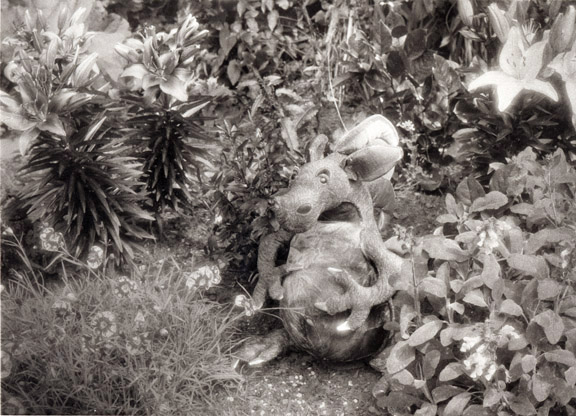
Artisan Film Negatives |
 |
| 'Puff Amidst the Posies' |
| Enlargement of 2-1/4 x 3-1/4 inch Melenex film negative on Ilford Multigrade FB |
|
"Celluloid Films. — In order to avoid the weight of glass plates, which may become burdensome on a tour, and also the risk of breakage of valuable records, thin films or sheets of celluloid coated with sensitive emulsions can be used, with great saving of bulk and weight and no loss of efficiency, though such films are sometimes liable to deterioration by long keeping before or after exposure." 'Photography', The Encyclopedia Britannica, Eleventh Edition, Volume XXI, 1911 |
|
Melenex — 7Mil Subbed Estar Film Base
Currently available from The Photographers' Formulary (here). The Formulary may not be able to sell you custom-cut sheets at this time (11/21/08) but contact them to find out. In any case, the material cuts easily with a utility knife or a rotary cutter. Just be careful to avoid scratching the surface. If this material were readily available and a known 'dependable' for the foreseeable future, it would be a great boon to home emulsion makers. Coating on plain polyester/Mylar is impossible. Without a 'subbing' base (industry jargon for 'substrate') the emulsion is repelled by the polyester material and beads and pools. The subbing base sticks to both the film and the emulsion, allowing even coating. Working with Melenex combines the best of all worlds. The material is coated exactly as you would coat dry paper. In my case, I use a TLF emulsion well and a puddle pusher. Melenex doesn't swell and ripple or washboard, so it dries flat. Any negative recipe can be used. I used TLF#1 for the examples on this page. For the details, please see 'Paper and Coating' and 'Dry Plate Photography — Recipes'. |
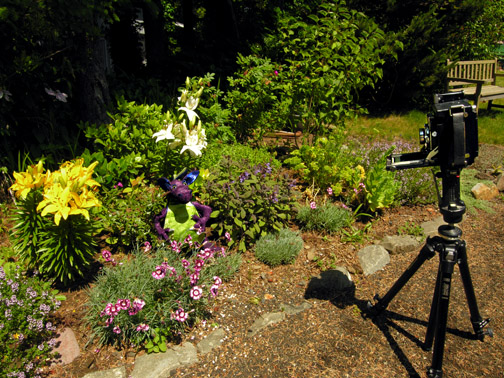 |
Melenex can be coated on as big a sheet as your well and puddle pusher allows, but it's my feeling that the overwhelming advantage of using film is being able to go smaller with your camera. I have a 'Baby Speed Graphic' press camera (2-1/4 x 3-1/4 inch) with little, tiny film holders (at least compared to the behemoth holders I normally carry around. Also, my film scanner only goes as big as 120 film. Loading my Baby with handcoated film is ideal. It gives me all the flexibility of film, but with the cool, old emulsion look, halation and all. And, a small size negative is frugal and makes the whole process very affordable. |
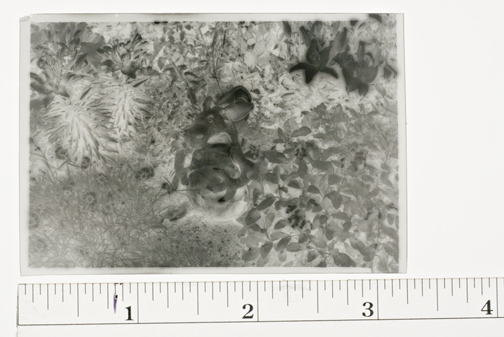 |
A 2-1/4 x 3-1/4 inch negative photographed on a light table (with a Pentax K20). |
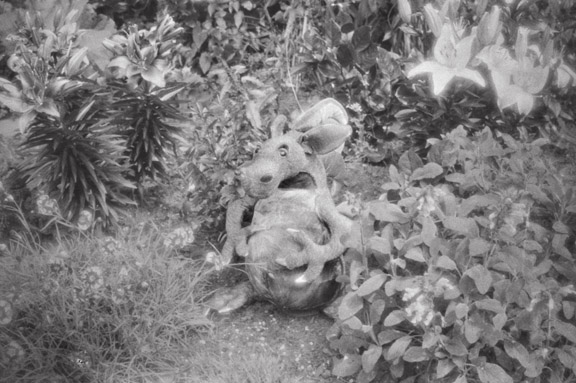 |
A digital print from the above photographed negative — simply cropped, desaturated, inverted, and sharpened. No spotting or manipulations of any kind were done. |
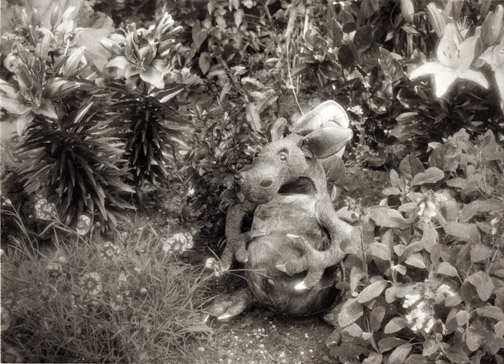 |
The print at the top of this page (wet print/ traditional enlargement: Ilford Multigrade IV FB, selenium toned.) The homemade negative handles the same in an enlarger as a commercial negative. |
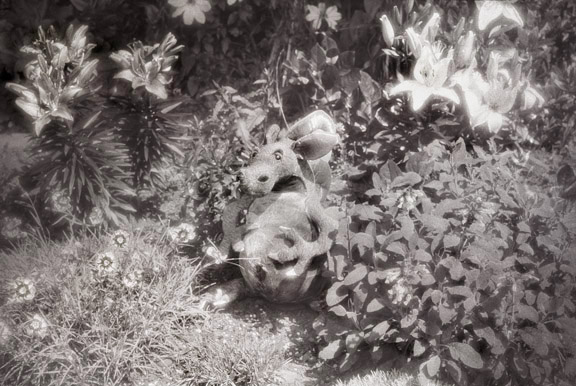 |
A digital print from another negative from the same shooting session.
The negative was
scanned with a Nikon Coolscan 9000 just as you would any commercial film
negative. After scanning, the file can become a final inkjet
print. Or, you can make a digital inkjet enlarged negative for
contact printing on handmade paper; the old emulsion characteristics
will be preserved - with the advantages of a smaller camera. This negative is currently in a sample book of handcrafted emulsion at The Photographers' Formulary in Montana. If you drop by there (always fun!!) ask to take a look at the book. |
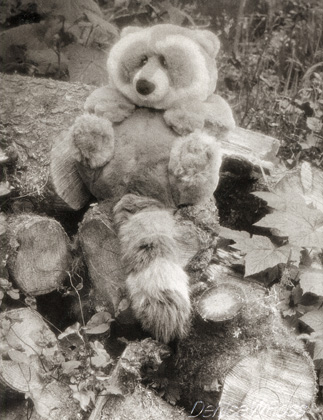 |
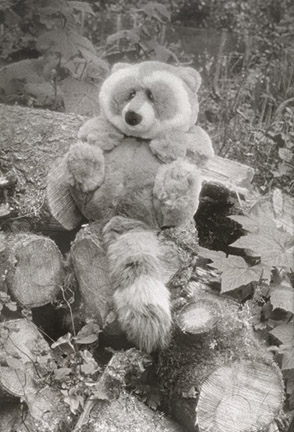 |
Two more examples of a Baby Graphic negative. On the left, a traditionally enlarged wet print (Ilford Multigrade) and on the right, a digital print from the same negative, scanned in the Nikon Coolscan 9000. |
|
Handmade Film with a Holga 'Toy'
Stereo Camera
If you don't have a camera that takes sheet film, it's easy enough to adapt a 120 camera to individual film negatives. If you have access to a film-changing bag you can open and close the back of your camera to replace the film after each exposure. The Holga cameras are particularly suited (and fun!) for this. For the image below, I cut up an 11x14 sheet of Melenex, fully coated with TLF#1, into pieces 2-1/4" x 5-1/2". I exposed and processed the negative just as I would a piece of sheet film. |
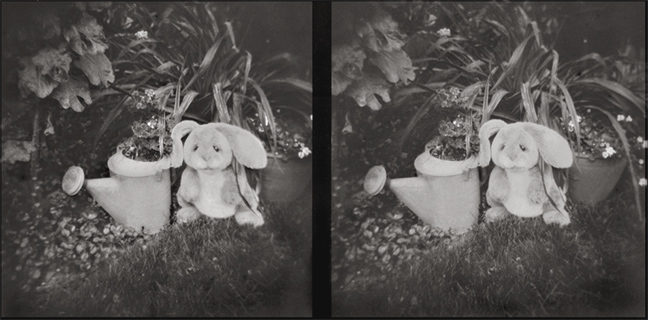 |
|
Work in Good Progress:
Handmade Subbed Acetate Film here
|
|
Replace This Text in js
Replace This Text in js
|
Copyright © The Light Farm |